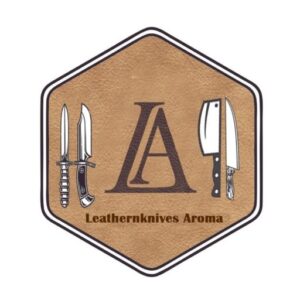Crafting a Damascus steel knife is a blend of science, artistry, and craftsmanship that unveils the true beauty and excellence of this ancient blade-making technique. Damascus steel, historically revered for its unique patterning and exceptional performance, is a result of precise forging and layering of multiple steels. Here, we delve into the artistry and steps involved in creating a handcrafted Damascus steel knife:
-
Material Selection:
Begin with carefully selecting high-quality steel for the Damascus billet. The choice of steel and its composition directly impacts the final appearance and performance of the blade.
-
Billet Creation:
Layer alternating sheets of high-carbon and low-carbon steel to form a billet. The high-carbon steel provides strength and sharpness, while the low-carbon steel adds flexibility and durability.
-
Forging and Pattern Development:
Heat the billet in a forge and carefully hammer it to weld the layers together. This forging process also begins to shape the blade and create the distinctive Damascus pattern.
-
Pattern Development Techniques:
Different techniques such as twisting, folding, or manipulating the steel during forging create various intricate patterns in the Damascus steel. Skilled artisans experiment to achieve desired patterns like ladder, raindrop, or rose.
-
Shaping the Blade:
Forge the billet into a rough blade shape, defining the blade’s length, width, and profile. Hammer and shape the steel while constantly monitoring the Damascus pattern to ensure it remains intact and visually appealing.

-
Grinding and Beveling:
Use grinders and files to refine the blade’s shape and create the edge bevels. This step requires precision and skill to maintain the Damascus pattern and achieve the desired sharpness.
-
Heat Treatment:
Heat treat the blade to harden the steel and enhance its cutting performance. The precise temperature control during heating and quenching is critical to achieving the desired hardness and temper.
-
Annealing and Tempering:
Anneal the blade to relieve stress and refine the grain structure for better durability.
Temper the blade at specific temperatures to achieve the ideal balance between hardness and toughness.
-
Handle Crafting:
Select a complementary handle material that aligns with the knife’s intended purpose and aesthetic. Common choices include wood, bone, horn, or composite materials.
Shape and craft the handle to ensure a comfortable grip, paying attention to ergonomics and aesthetics.
-
Assembly and Finish:
Attach the handle scales to the tang of the blade securely, using epoxy or pins.
Polish the blade to a high sheen, revealing the intricacies of the Damascus pattern. Etching the blade with acid can enhance the contrast and visibility of the pattern.

-
Final Touches:
Sharpen the blade to a razor-sharp edge, honing it carefully for optimal cutting performance.
Perform a final inspection to ensure the knife meets quality standards and expectations.
Handcrafted Damascus steel knife are a testament to the meticulous artistry and skill passed down through generations. Each knife carries a unique story within its pattern and is a blend of functionality, history, and aesthetic beauty.
